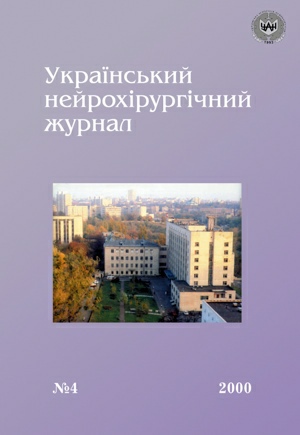History of development department of Spinal surgery Institute of Neurosurgery
Keywords:
Spinal Pathology Clinic at Neurosurgery Institute, story developmentAbstract
The department was fond in 1957. From 1957 to 1997 department was guided by Prof. Michailovsky V.S. Now the scientific consultant of the department is Prof. Polischuk N.E. The chief Department of Spinal surgery is Ph.D. Eugene I. Slin’ko.
The Neurosurgical service at Department of Spinal surgery of Institute Neurosurgery in Kiev was and is dedicated to achieving excellence in patient care, teaching and research. Its clinical service has as its goal compassionate and effective care and is enhanced through the advancement of scientific knowledge and technological expertise. Its teaching program includes students, residents and graduate physicians. It is designed to promote understanding of neurosurgery and to inspire caring for patients, technical and surgical skill, and scientific inquisitiveness.
Now the research programs that department is caring are:
– Microsurgical technologies of treatment disc herniation,
– Management of spinal neoplasm,
– Spinal instrumentation and stabilization
– Microsurgical and endovascular technologies treatment of spinal AVMs
– Syringomyelia and Arnold Chiari malformation treatment
– Complex surgical approaches to foramen magnum region
– Development of microsurgical technologies of treatment intramedullar tumor of the spinal cord
– Treatment of injury spine and spinal cord
– Anterior surgical approaches to spine.
Downloads
How to Cite
Issue
Section
License
Copyright (c) 2000 Mykola Polishchuk, Eugene Slynko, Anatoliy Kosinov, Anatoliy Pastushin, Mykhaylo Tsymbal

This work is licensed under a Creative Commons Attribution 4.0 International License.
Ukrainian Neurosurgical Journal abides by the CREATIVE COMMONS copyright rights and permissions for open access journals.
Authors, who are published in this Journal, agree to the following conditions:
1. The authors reserve the right to authorship of the work and pass the first publication right of this work to the Journal under the terms of Creative Commons Attribution License, which allows others to freely distribute the published research with the obligatory reference to the authors of the original work and the first publication of the work in this Journal.
2. The authors have the right to conclude separate supplement agreements that relate to non-exclusive work distribution in the form of which it has been published by the Journal (for example, to upload the work to the online storage of the Journal or publish it as part of a monograph), provided that the reference to the first publication of the work in this Journal is included.









